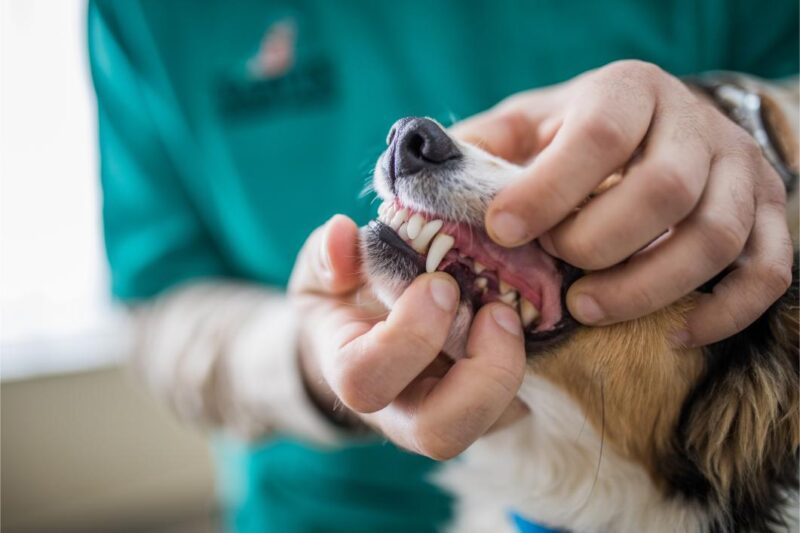
Brushing your dog’s teeth is one of those tasks that seem small but in all actuality has an enormous influence on day to day well-being and even longevity. The combination of at-home-oral care and regular veterinary dental cleanings can do wonders for your pet’s mouth. Keep reading to learn more about how to brush your dog’s teeth:
The Big Picture
Not only does regularly brushing keep bad breath to a minimum, but it also reduces the risk of infection, inflammation, and even systemic disease. Left alone, oral bacteria can wreak havoc in the mouth, and it can even enter the bloodstream and find its way to the heart, kidneys, and liver. Simply brushing your dog’s teeth from an early age can lead to greater vitality and a longer life.
The Right Stuff
Brushing your dog’s teeth can be a simple step in your daily routine, or part of your weekly grooming regimen. Depending on your dog’s flavor preferences, find a couple of dog toothpaste products that suit them (never human toothpaste). A specially-designed pet toothbrush can reach molars easily and, with soft bristles, won’t irritate the gums.
The Importance of Repetition
As long as teeth brushing sessions are short and rewarding, your dog will be more likely to allow your efforts. Sometimes treats can help you create this routine, too.
The more you provide this opportunity on a schedule, the better.
- Stay patient, calm, and relaxed.
- Never force your dog to accept the toothbrush and keep trying if they show initial resistance.
- Reward them with praise, affection, and dental treats.
A Tooth Brushing Guide
Before you even try the toothpaste, introduce your dog to the toothbrush.
- Allow them to sniff and lick the toothbrush, but try to deter them from chewing on it.
- Gently touch their teeth, gums, muzzle, and lips with the toothbrush while encouraging them with praise.
- Slowly start to insert the toothbrush into the mouth, slowly rubbing the bristles in a circular motion on the surface of the teeth.
- Over time, add the toothpaste and attempt to brush each tooth on the upper and/lower jaw.
- Once they show a state of acceptance or relaxation, gradually build up time to include brushing of every tooth.
- Be sure that your slow circles of the teeth gently touch the gum line where plaque and tartar are found.
- If they show signs of annoyance or frustration, give them a break.
Senior Dental Care
The majority of dogs over three years old have some form of periodontal disease. Since plaque turns into tartar within a day or so (that cannot be brushed off at home), be sure to keep up a routine every day or so to keep adult and senior dogs healthy and strong.
The Veterinary Oral Health Council (VOHC) keeps a comprehensive list of safe dental products that are good for use at home. We recommend trying a rinse, dental chews, and other treats to keep your dog’s teeth clean and fresh between dental cleanings.
To keep dogs on track, we recommend annual dental cleanings under anesthesia, digital X-rays, and general wellness exams. We are always happy to help you with questions or concerns at Brownswitch Pet Hospital.
